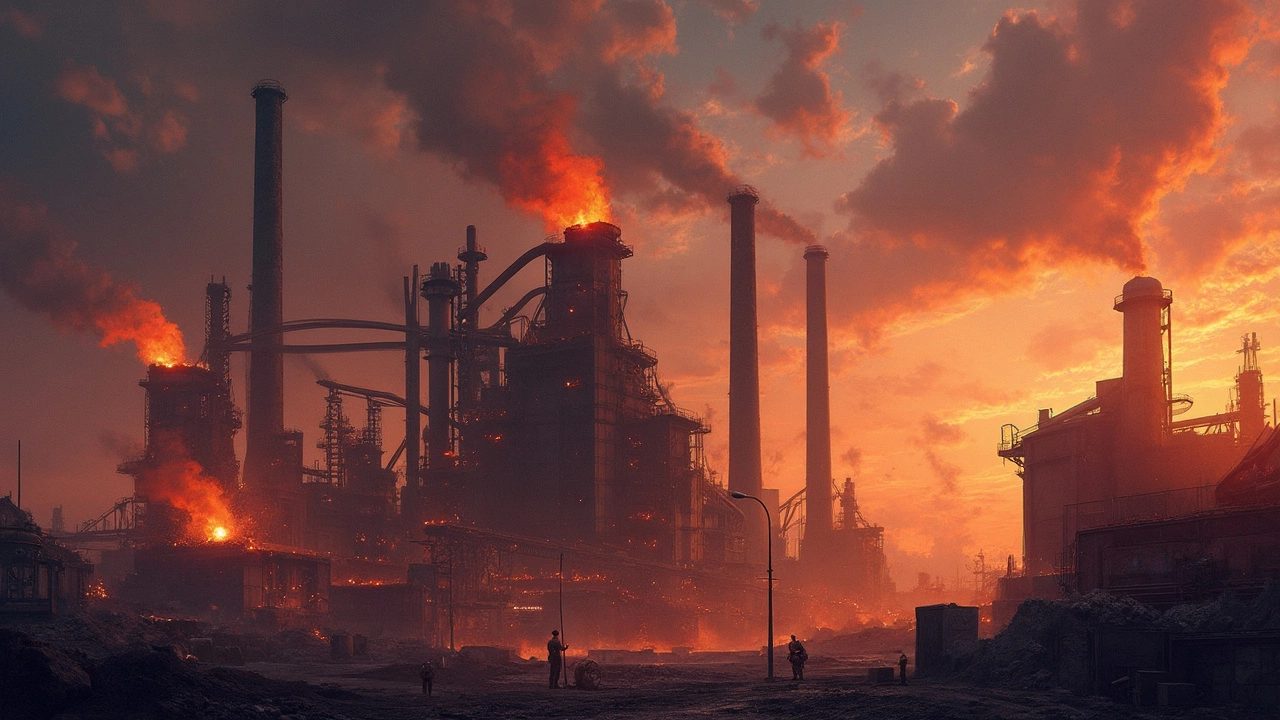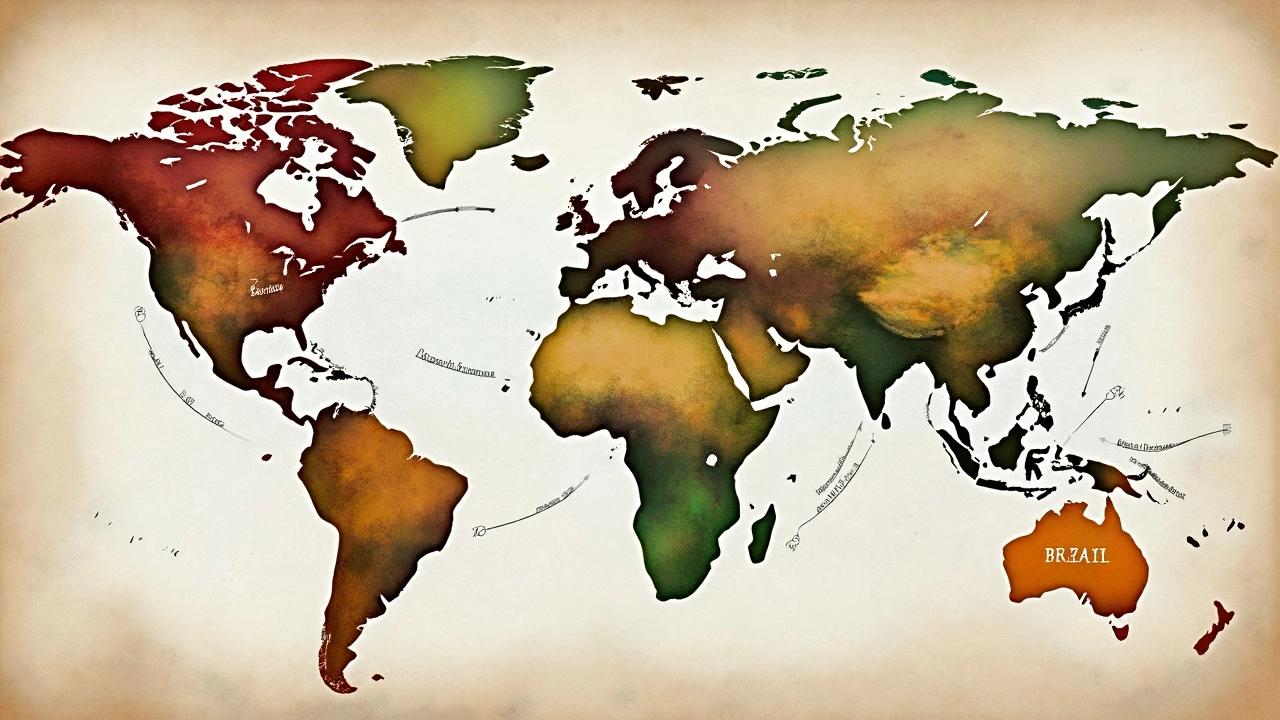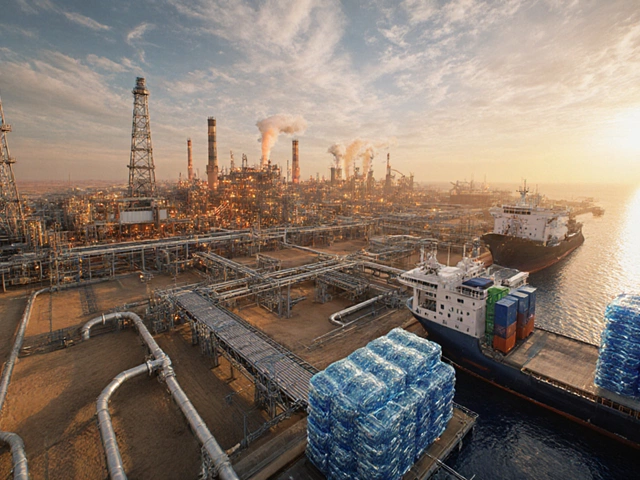Steel is like the backbone of modern infrastructure, and in the US, demand often outpaces supply. You might wonder, where does all that extra steel come from? Globally, a few countries stand out as major suppliers. This isn't just about supply and demand, though. Trade policies, political tensions, and even global events can sway where and how much steel the US imports.
Countries like Canada, Brazil, and Mexico have played significant roles in filling the US steel gap. Canada, for instance, has been a top exporter due to its proximity and trade agreements. But there's more than geography at play—factors like cost, quality, and reliability are always on the table.
- Overview of US Steel Imports
- Top Steel Exporters to the US
- Domestic Steel Production
- Impact of Trade Policies
- Trends Shaping Future Imports
Overview of US Steel Imports
The US steel supply chain is a remarkable blend of domestic production and international imports. With rapid industrial growth and infrastructure needs, the US steel market often looks beyond its borders to meet demand.
Historically, the United States relied heavily on domestic steel production, which thrived after World War II. However, as time went on, economic changes and labor costs led to a shift towards imports. By 2023, international sources accounted for more than a third of the steel consumption in the US.
Why import so much steel? Mainly, it's about keeping up with demand while balancing costs. Imported steel can often be cheaper, even with tariffs, than American-made steel. Plus, certain countries like Canada and Mexico enjoy favorable trade arrangements thanks to agreements like the USMCA.
Top Import Sources
Canada holds the top spot in the list. The reason? It's both a neighbor and a reliable trade partner, often supplying high-quality steel at competitive prices. In second place, there's Mexico, leveraging its proximity and robust trade ties under the USMCA deal.
| Country | Percentage of US Steel Imports (2023) |
|---|---|
| Canada | 17% |
| Mexico | 13% |
| Brazil | 11% |
Additionally, Brazil remains a key player due to its vast production capacity and lower labor costs. The diversity of suppliers helps mitigate risks associated with relying on a single source.
Influences on Import Choices
Various factors influence where the US buys most of its steel. Trade policies and political relationships play significant roles. For example, any trade tensions or tariffs can swing the pendulum towards domestic steel despite the high costs.
Another layer of complexity comes from the need for specific steel grades and types required for different industries. Automotive, construction, and machinery sectors often seek specialized steel, which can be more easily sourced internationally.
In the ever-changing landscape of steel imports, staying informed about policies, global production, and market trends is crucial for businesses and policymakers alike.
Top Steel Exporters to the US
When it comes to the steel import game, a few countries have a bigger slice of the pie. At the forefront is Canada, often the largest supplier of steel to the US. This isn't by chance—Canada's proximity and established trade agreements make it a natural choice for American businesses.
Following close behind is Brazil. Known for producing high-quality slabs, Brazil has been a consistent player in the US steel market. With its vast resources and well-developed production facilities, Brazilian steel is often seen as a balance of quality and cost-effectiveness.
Let's not forget Mexico. Thanks to NAFTA and now the USMCA, the flow of steel between the US and Mexico has always been dynamic. Mexican steel is regularly chosen for its competitive pricing and the ease provided by shared borders.
Other Notable Players
While Canada, Brazil, and Mexico take the lead, other countries like South Korea and Japan also contribute significantly. South Korea specializes in more niche, high-tech steel products, while Japan, famous for its cutting-edge technology and innovation, offers high-grade steel used in everything from automobiles to electronics.
Changes Over Time
Recently, shifts in trade policies and international relations have also impacted these dynamics. For instance, tariffs imposed during trade disputes can suddenly alter the landscape, sometimes with long-lasting effects.
| Country | Percentage of US Steel Imports |
|---|---|
| Canada | 20% |
| Brazil | 13% |
| Mexico | 11% |
| South Korea | 10% |
Despite these shifts, the reliance on international partners for steel is a constant feature of the US economy, driven by the ongoing demand that can't be met by domestic production alone.

Domestic Steel Production
When you think about steel manufacturing in the US, iconic cities like Pittsburgh might pop into your head. But today, the landscape has changed quite a bit. There's a hefty chunk of steel produced in states you might not expect, like Indiana and Ohio, with these areas housing some of the largest steel production facilities in the country.
You might be surprised to learn that the US steel industry churns out about 100 million tons of steel annually. While that might sound like a lot, the US still needs to import steel to meet the full demand of around 130 million tons per year. This shortfall is filled by imports from key partners.
US steel supply isn't just about quantity but also quality. American steel plants are known for producing high-grade steel used in everything from construction to car manufacturing. Technology plays a big role in keeping them competitive, with many facilities investing in innovative processes to boost efficiency. You bet they're not slacking off in the environment department either; cleaner production methods are all the rage.
Steel Production Process
Most of the steel in the US is made using Electric Arc Furnaces (EAFs), which use recycled steel scrap. This method is more eco-friendly compared to traditional blast furnaces. Plus, it's less energy-intensive. About 70% of the US steel is produced this way, making it a leader in sustainable steel production.
Challenges and Opportunities
The domestic industry faces some challenges, like fluctuating ore prices and international competition. But on the flip side, there's plenty of opportunity with infrastructure spending set to rise. Local plants are gearing up to meet future demands, focusing on innovation to stay ahead. So, while the US might not be topping the list of the world's largest producers, it's carving a niche in high-quality, sustainably made steel.
Impact of Trade Policies
Trade policies can seriously sway the US steel market, shifting tides in the blink of an eye. Take tariffs, for example. The US has imposed tariffs on foreign steel before, as seen with the Steel Tariff Program in 2018 under the Trump administration, which slapped a 25% tariff on steel imports. That move aimed to protect American jobs, but it stirred up quite the debate and even led to some retaliation from other countries.
Tariffs and Quotas
Tariffs might make imported steel more expensive, prompting US companies to buy from domestic producers. But what happens if those local sources can't meet demand? That's where quotas come in. These are kind of like a cap on how much steel can be imported without incurring hefty fees. The idea is to strike a balance between protecting jobs and maintaining supply levels.
International Agreements
Then there’s agreements like the USMCA (a.k.a. NAFTA 2.0), which play a big role in steel trade between the US, Canada, and Mexico. These deals help set the ground rules and tariffs. The US wants to ensure that not only does it receive enough steel, but it also gets it at competitive prices without compromising on quality.
Recent Developments
On a global scale, trade wars can lead to tensions and abrupt changes in import patterns. Just look back at the squabbles between the US and China—a major player in the global steel industry. Such disputes can result in sudden shifts where and how steel is bought and sold, often causing prices to fluctuate unexpectedly.
Here's a quick comparison of tariff imposition impacts in recent years:
| Year | Tariff Imposed | Import Reduction (%) |
|---|---|---|
| 2018 | 25% | 10% |
| 2020 | 10% | 5% |
Ultimately, trade policies are a potent tool in shaping the US steel supply. They can either ease the flow of steel into the country or bottleneck it, affecting everything from construction costs to car prices. So next time you hear about a new tariff or trade deal, you’ll know it’s more than just paper—it’s a pivotal piece of the economic puzzle.

Trends Shaping Future Imports
The landscape of steel import is constantly evolving, and several key trends are poised to shape how the U.S. sources its steel in the future.
Focus on Sustainability
With the global push towards sustainability, many countries, including the U.S., are rethinking their steel supply. This means a shift towards manufacturers who prioritize eco-friendly production methods. Consumers and industries are increasingly favoring steel made with reduced carbon footprints.
Trade Policies and Tariffs
Trade policies can significantly impact the flow of steel. Recent trade agreements and tariff adjustments have already altered the dynamics. The U.S. administration's stance on tariffs continues to be a wild card that could either incentivize domestic production or push for more imports from traditional partners like Canada and Mexico.
Technological Advancements
Advancements in technology are making steel production more efficient. Countries investing in cutting-edge manufacturing processes tend to offer competitive pricing and better-quality products, influencing U.S. purchasing decisions.
Evolving Market Demands
As industries like automotive and construction innovate, the demand for specialized steel types grows. The U.S. might increase imports of particular steel grades that are not produced domestically in sufficient quantities.
Economic Fluctuations
Economic conditions globally and domestically can sway import trends. In periods of economic growth, construction and manufacturing demand more steel, potentially increasing imports if domestic supply doesn't keep up.
Table below shows the change in steel import percentages over recent years:
| Year | % Change in Imports |
|---|---|
| 2022 | +5% |
| 2023 | -2% |
| 2024 | +3% |
These trends highlight the importance for U.S. industries to adapt and stay informed. Being prepared for these shifts can help businesses remain competitive and make strategic decisions in a fluctuating market.











Write a comment